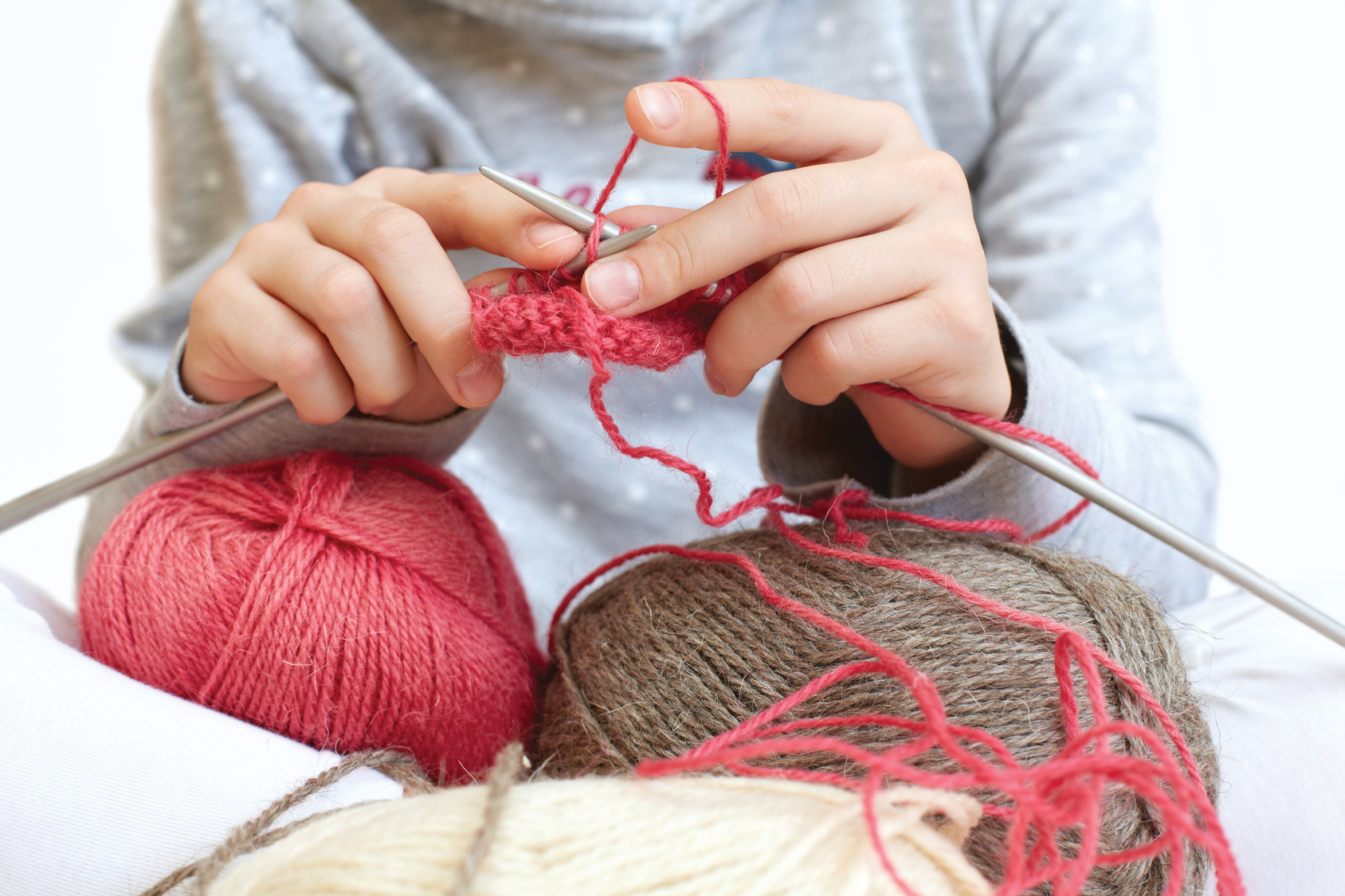The Lazy Homeschool Parent’s Guide to Holiday Cheer
It’s okay to scale way back if Pinterest-perfect holidays are making you stress more than you celebrate.
It’s okay to scale way back if Pinterest-perfect holidays are making you stress more than you celebrate.
Okay, let’s be clear: I’m not calling you lazy. You’re a mom or a dad, and I know you work hard every day, and I do, too. The fact is, when I see the effort so many families put into their holiday preparations on top of everything else they have to do, I feel lazy. Or maybe the more honest way to put it is I don’t want to do all that.
In my house, we celebrate Christmas, and I love Christmas. I love the decorations and twinkling lights, and I love the spirit of the season, but I hate doing the decorating, and I especially hate putting it all away at the end of the season. I’m not a crafty person, and I’m not a great cook either. So it’s easy to let myself feel more pressure than holiday cheer.
I hope I’m not alone and there are a few other moms out there that feel the same way. If there are, I put this list together with you in mind, but please consider it simply a brainstorm on some possible ways to make the holidays less stressful. If you have better ideas, go with that!
Do what you want to do and know that’s enough. Your kids want a cheerful mom this holiday season, not a stressed mom. So make a list of the things you enjoy doing during the holiday season, stick to that, and stop feeling like you need to do more.
Don’t look at Pinterest. Just don’t even go there. If you feel like you can go there and make it out alive, then okay, but don’t go there, if you know it’s not good for you.
Take the pressure off making Christmas cards this year by picking the most recent, doable snapshot of your kids, and using a template at your favorite card maker. You don’t have to have a designer look every year. No one will remember it by next year anyway.
If your kids like crafts, the easiest craft is making snowflakes. You can use them for ornaments or hang them from doorways. They’ll really brighten up your house. Here’s a good tutorial for making snowflakes.
Turn on some holiday music. Music does wonders for the soul, and it’s sure to put everyone into the holiday spirit. And it’s as easy as plugging your iPod into some speakers.
When it’s time to decorate, pull all those boxes out of the attic, open them, and tell the kids to have fun. Even if things aren’t exactly “properly placed,” you’ll have fun seeing what they come up with, it’ll make a great memory, and it takes the pressure off of you.
Cooking is not my favorite pastime, but my kids enjoy helping me bake. Instead of feeling like I have to bake lots of items for gifts, I pick one or two treats to do with my kids and that’s it.
I’m also not a crafty person. Hearing about all the families who make their gifts for each other makes me feel a bit guilty, but that’s just not me, and it doesn’t have to be you either, if you aren’t into it. So remember that giving with your heart doesn’t have to equal giving with your hands.
Play games. The purpose of the holiday season is to spend more time with loved ones, right? Pull out some games and have fun together!
Get outside. Bundle up and spend some time in nature. It’s a great way to spend time together and studies show that it’s great for lowering your stress levels, which most people need this time of year!
What do you do to simplify the holiday season?
Tired of Being Tired? It Could Be Homeschool Burnout
Burnout doesn’t mean homeschooling isn’t working or that you’re a bad homeschool parent — but it does mean something needs to change.
Burnout doesn’t mean homeschooling isn’t working or that you’re a bad homeschool parent — but it does mean something needs to change.
One morning in mid-April, Lindsey* lay in bed, staring at her ceiling.
Her to-do list for the day was full: finish up a geography unit with her 9-year-old, work through a math quiz with her 11-year-old, and make sure her 14-year-old got to her theater troupe practice on time. And that was on top of the usual run of feeding people, cleaning the house, and managing all the rest of her homeschool life. She should get up. But she just lay there, staring at the lines on the ceiling.
“You think of high-powered career people getting burned out, not homeschool moms,” Lindsey says. “I knew something was wrong with me, but I never thought I was burned out.”
Burnout is a real mental health phenomenon, and it’s different from the “I’m-gonna-need-a-bigger-cup-of-coffee” exhaustion that can strike on a busy homeschool week.
“Burnout happens when you’ve been experiencing chronic stress for so long that your body and emotional system have begun to shut down, and you’re operating in survival mode. You numb out because you can’t think,” says Sara Denning, Ph.D, New York City-based psychologist.
If that sounds a lot like depression, it’s because it is — when researchers from the University of Franche-Comté looked at 5,000 teachers who described themselves as “burned out,” 90 percent of those teachers also met the diagnostic criteria for depression, including sleep changes, fatigue, and an inability to find enjoyment in previously enjoyed activities.
While stress makes you feel super-emotional — think mood swings and eating your feelings — true burnout makes you feel — well, nothing. In fact, it can be hard to distinguish between depression and burnout because there’s so much overlap in the symptoms, so if you’re not sure what’s going on with your slump, David Hellerstein, M.D., professor of clinical psychiatry at Columbia University, recommends taking a week’s vacation from homeschooling. At the end of the week, are you excited and ready to dive back in? You’re probably dealing with an overcrowded schedule, but you’re not really burned out. On the other hand, if you’re back to feeling burned out a couple of hours or days after easing back into your regular routine, there’s a good chance you’re dealing with genuine burnout.
Another clue: Burnout usually affects a specific part of your life — I can hear you laughing, since homeschooling pretty much consumes your entire life, but if you find yourself getting excited about your book club night or a weekend getaway, you might be dealing with homeschool burnout.
It’s not hard to understand how a homeschool parent could succumb to burnout. Homeschooling isn’t a full-time job — it’s an all-the-time, every-single-day job. You have all the duties and responsibilities of a teacher — often, of several teachers — plus all the duties of a parent, including housework, food prep, and everything else that your daily life requires. It’s a rewarding gig, but it’s not always an easy one.
“People tend to think of burnout as something that happens when you don’t like your job, but it can also happen when you like your job so much that you give it more time and energy than you have to give,” explains Hellerstein. “Burnout isn’t necessarily a sign that you need to get out — it’s often a sign that you’ve been putting yourself last for too long.”
Sound familiar? If you’re feeling burned out, it doesn’t mean that it’s time to quit homeschooling — though a break is never a bad idea, says Denning. But burnout doesn’t go away on its own. In fact, the longer you try to ignore it, the worse it gets. These strategies can help.
Stop putting yourself last.
Seriously. Today. Not next week, not when you finish up this year’s violin lessons, not as soon as co-op ends for the summer. Right now. When Lindsey finally sat down with her doctor, she realized that she couldn’t remember the last time she’d had real time to herself. “I love doing things for my kids,” she says. “I was never resentful or upset — but it was slowly wearing me out.” Lindsey’s doctor prescribed a minimum of one night a week off, and now Lindsey’s partner takes over kid duty on Wednesday nights. At first, Lindsey says, she didn’t even know what to do with time to herself, and some nights, she ended up just driving around for a couple of hours. Now, she looks forward to having a quiet dinner and reading time at a local cafe or meeting a friend to watch a movie.
Do more of what you love.
Everybody enjoys some parts of homeschooling more than others, so if you’ve gotten into a groove where there’s nothing you genuinely enjoy on most days’ agenda, you’re at high risk for burnout, says Hellerstein. Adjust your schedule so that you have something to look forward to every day — and put it at the top of the to-do list so that it’s one of the first things you do and not something that you find yourself putting off until the next day.
Don’t participate in a grouse group.
Under ordinary circumstances, having a group of a moms to vent with at park days can be part of a healthy homeschool life, but not when you’re dealing with burnout. Negativity can be contagious, and burned-out people are especially susceptible. If you can, steer the conversation to more positive topics; if you can’t, bring a book and relocate your chair for a few weeks while you recover.
Keep a journal.
Writing down your feelings can be one of the most effective ways to deal with them, says Denning. Be specific: Write down exactly what’s wearing on you, whether it’s your son grumbling about math or your all the driving you’re doing on Mondays, and note proactive things you can do to improve the situation (like taking a month-long break from math or skipping a particular park day). The more nebulous your stresses are, the more they impact you—writing them down makes them feel solvable.
*last names omitted for online publication
Beat the Winter Homeschool Slump: Break with Your Regular Routine
In this five-part series, we’re helping you get through the midwinter slump in your homeschool. First up: Give your routine the boot, and try something new.
Bust through the blahs with a new twist on an old classic—the unit study.
Getting lost in a completely different world can be one of the best ways to beat the winter blues. Turn to your favorite book for inspiration, and craft a weeks-long study that will totally shake up your routine while still keeping you on track for your academic goals. These are some ideas that have worked for our homeschool, but your favorite books are the best guide.
A semester at Hogwarts. Leave a little surprise owl post at the end of your kids’ beds, and let them wake up to study at the legendary school of witchcraft and wizardry. Do chemistry experiments for Potions class, set up your telescope for nighttime Astronomy lessons, and put together a collection of readalouds to explore the history of magic. If you want, you can even track down school robes at a thrift shop — nothing’s more spirit-lifting than a little dress-up.
Little term on the prairie. Use Laura Ingalls Wilder’s classic stories about frontier life or Louise Erdrich’s new classics of Native American life as inspiration for a month of pioneer studies: Make your own butter and cheese, cook dinner over an open fire, practice your handwriting on slates, and start your day with outdoor chores. This is also a great time to dive into U.S. history studies and explore the history of westward expansion.
In school with Shakespeare. Tackling one of Shakespeare’s plays together is a great opportunity to immerse yourselves in history, theater, poetry, and music. Choose a play that piques your interest, and watch several film and/or stage adaptations, considering differences in interpretation and staging. Create music soundtracks for your play. Rewrite portions of the play in contemporary language. Act out scenes in costume.
4 Other Ways to Shake Up Your Routine
Flip your routine. If you usually start the day with a readaloud and finish with your nature journal, bundle up for an early morning nature walk and end the day with your book.
Take a field trip every day. Virtual field trips let you get out of the house without, you know, actually leaving the house.
Adopt a class pet. Obviously do this only if you’re committed to the responsibilities of pet ownership, but if you’ve been thinking about setting up an aquarium or adopting a puppy, now’s a great time.
Put on an indoor Olympics. Events like juggling, bowling, sack racing, and obstacle course can keep kids moving when the weather outside is not-so- delightful.
































SHELLI BOND PABIS is home | school | life magazine’s senior editor. She writes about her family’s homeschooling journey at www.mamaofletters.com.